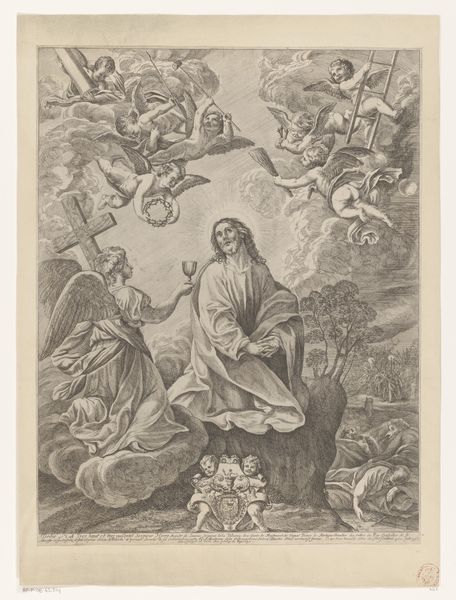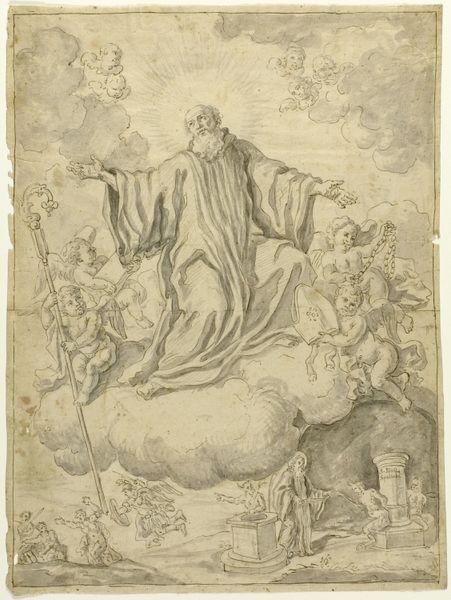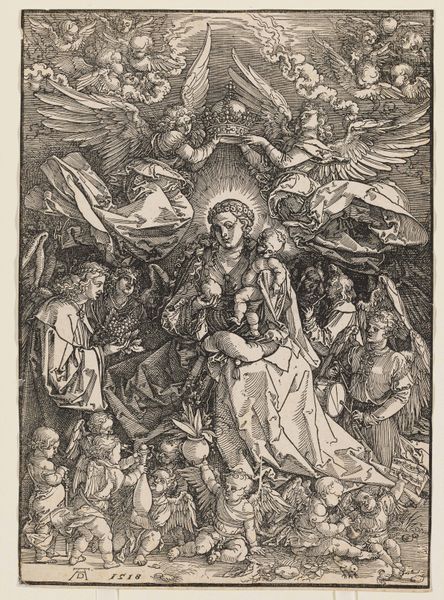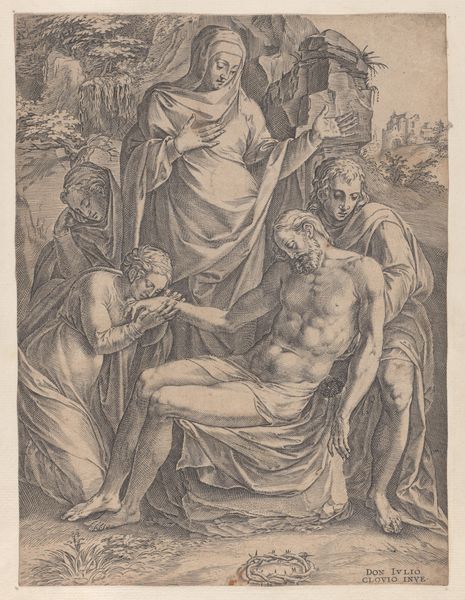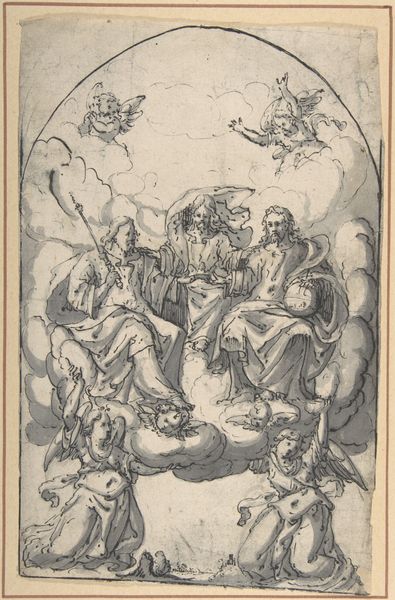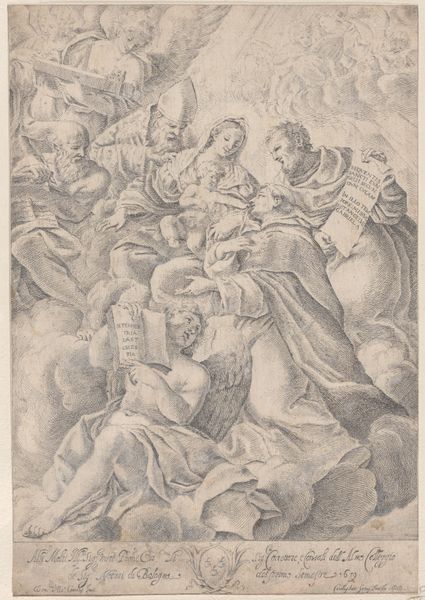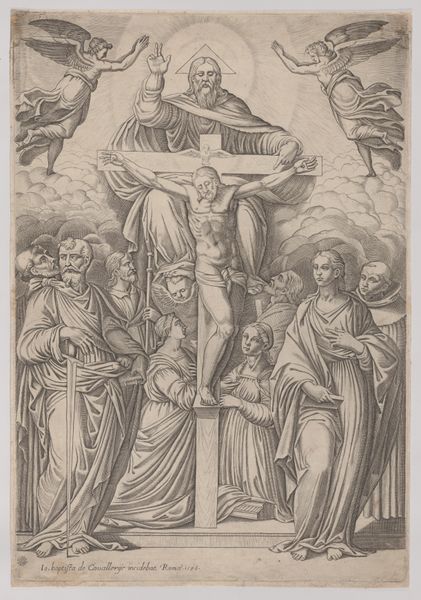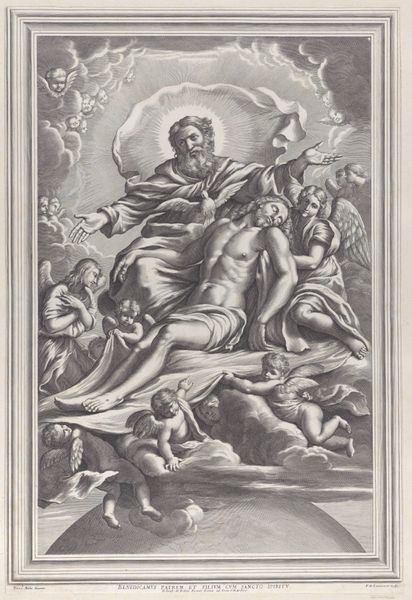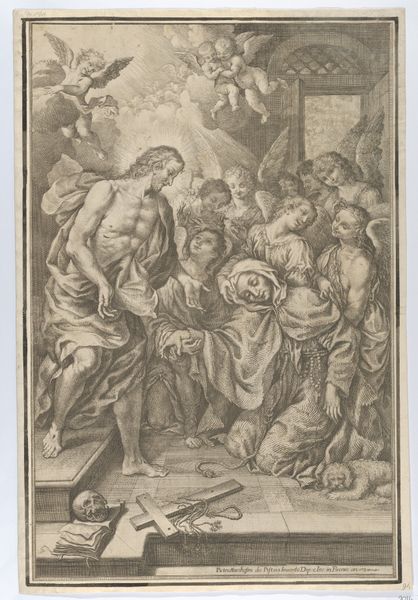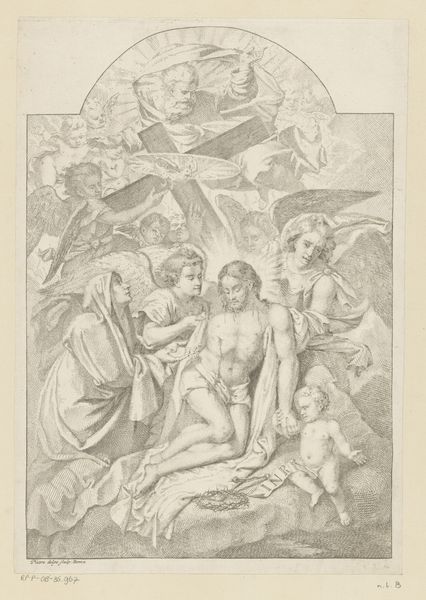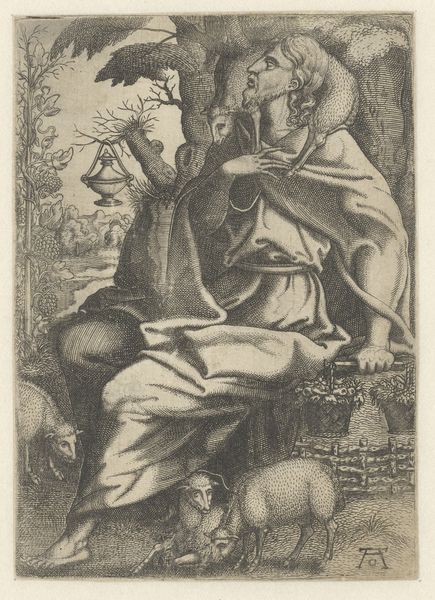
print, engraving
#
portrait
#
baroque
# print
#
old engraving style
#
figuration
#
history-painting
#
engraving
Dimensions: height 202 mm, width 143 mm
Copyright: Rijks Museum: Open Domain
Curator: This engraving, dating from 1565 to 1630, presents Christ as Salvator Mundi, Savior of the World. Antonio Tempesta is credited with its creation. Editor: My first impression is one of serene power; Christ sits enthroned amidst swirling clouds and cherubic figures. The linework, so characteristic of engravings, gives it a delicate yet imposing presence. Curator: Indeed. Considering the medium, this work exists within a network of reproduced imagery meant for dissemination. Its materiality speaks to both devotion and the accessibility of religious iconography to wider audiences. The production of prints allowed for widespread circulation, impacting social perceptions. Editor: It’s also striking how Christ’s portrayal attempts to project universal power while existing within very specific socio-political contexts of the time. The symbols of religious authority, the orb representing earthly dominion, were tools in asserting dominance amid shifting power dynamics of the era. I think a queer reading might point out the performativity of masculinity in this particular rendition, though one could also read it through the lens of colonial expansion of power. Curator: Precisely. Think about the labor involved: the engraver’s painstaking work to translate artistic vision into reproducible form, reflecting both technical skill and the demand for such religious imagery. The availability of this imagery meant access to grace and status to both buyers and those who created this material. Editor: The clouds act not merely as a heavenly stage but as a reminder that power operates through obscuring its true sources, often divinely sanctioned narratives. We have to be sensitive in analyzing art historical contexts but not letting that influence our actions today. We must acknowledge the roots of oppression in past portrayals even as we dissect artistic techniques and labor investment. Curator: An intersectional approach opens our eyes to what power structures made what we're seeing today. Let's examine Antonio Tempesta's choices of line and composition; and perhaps the next piece helps us connect consumption with these social underpinnings in this piece. Editor: I agree. Reflecting on art requires simultaneously evaluating what is, and what this has done in and through time.
Comments
No comments
Be the first to comment and join the conversation on the ultimate creative platform.
